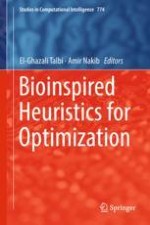2019 | OriginalPaper | Buchkapitel
10. Hidden Markov Model Classifier for the Adaptive ACS-TSP Pheromone Parameters
verfasst von : Safae Bouzbita, Abdellatif El Afia, Rdouan Faizi
Erschienen in: Bioinspired Heuristics for Optimization
Aktivieren Sie unsere intelligente Suche, um passende Fachinhalte oder Patente zu finden.
Wählen Sie Textabschnitte aus um mit Künstlicher Intelligenz passenden Patente zu finden. powered by
Markieren Sie Textabschnitte, um KI-gestützt weitere passende Inhalte zu finden. powered by
